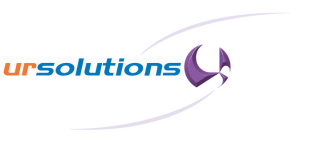- Privacy Policy
- Our Service Commitment
- Red Hat Delivers Accessible, Open Source Generative AI Innovation with Red Hat Enterprise Linux AI
- Is Red Hat OpenShift Container Platform Virtualization the Best Alternative to VMware Amid Rising Costs?
- Top 10 Stories About Compute Engines, Linux of 2024 (So Far) - ITPro Today
UR Solutions News
Open-source News
RansomEXX Ransomware Can Now Target Linux Systems - BankInfoSecurity.com
RansomEXX Ransomware Can Now Target Linux Systems BankInfoSecurity.com
Optimized Compiler Builds Are Well Worth It For Intel Tiger Lake
Making use of "-march=tigerlake" for building optimized binaries catering to Intel's latest-generation processors is well worth it on the likes of GCC 11. Out of the new instruction set extensions on Tiger Lake is more uplift than we have seen out of recent Intel generations and comparing the different "-march=" targets shows significant performance benefits if you don't mind compiling your own software from source.
New RansomEXX Ransomware Variant Targets Linux Systems - Cyber Security News
New RansomEXX Ransomware Variant Targets Linux Systems Cyber Security News
RISC-V based Allwinner chip to debut on $13 Linux hacker board - LinuxGizmos.com
RISC-V based Allwinner chip to debut on $13 Linux hacker board LinuxGizmos.com
RISC-V based Allwinner chip to debut on $13 Linux hacker board - LinuxGizmos.com
RISC-V based Allwinner chip to debut on $13 Linux hacker board LinuxGizmos.com
ASUS Offers First Motherboard Firmware Update Via LVFS+Fwupd For Linux Users
ASUS has been evaluating the Linux Vendor Firmware Service (LVFS) for distributing firmware updates to their Linux customers for flashing in turn via Fwupd. Their first motherboard firmware update has now been volleyed onto this open-source platform for easing firmware updates on Linux...
Compact box computer and signage system feature RK3399 - LinuxGizmos.com
Compact box computer and signage system feature RK3399 LinuxGizmos.com
Arm Neoverse V1 Support Added To LLVM Clang 12 Compiler
Announced by Arm back in September was the Neoverse V1 "Zeus" platform with 50%+ performance uplift over the Neoverse N1. Neoverse V1 also supports Scalable Vector Extensions (SVE) and other features in catering the platform for machine learning, cloud, HPC, and similar use-cases...
TTM Multihop Code Revised For Improving Linux GPU Buffer Management
Among the many open-source graphics driver improvements being worked on recently by Red Hat's David Airlie from Lavapipe to OpenCL 3.0 Clover work, another recent effort has been around TTM "multihop" as an improvement for this memory management infrastructure used by the likes of the AMDGPU kernel driver...
Canonical Saw ~$119M Revenue In 2019 But Still Operating At A Loss
Ubuntu maker Canonical Holdings Limited recently submitted their UK financial report for their fiscal year ending 31 December 2019. During the pre-COVID times they generated around 22% more revenue than 2018 but still operated at a loss albeit more narrowly than in prior years...
NVIDIA Extends Fragment Shading Rate Extension In Vulkan 1.2.160
Vulkan 1.2.160 is out this morning as the newest revision to the Vulkan graphics/compute API...
